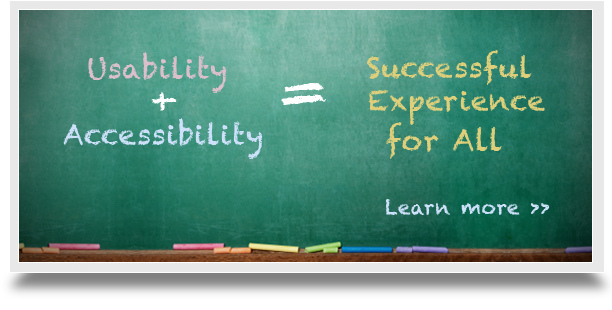Over the past few years colleges have faced an increasing number of complaints from the Department of Education’s Office of Civil Rights (OCR) requiring their web content be made accessible to people with disabilities. Although the OCR complaints typically focus on publicly available web content, the American Disabilities Act (ADA) requires that all online instructional content meet accessibility guidelines. The Web Content Accessibility Guidelines (WCAG 2.0) provides guidance on making web content accessible to people with a broad range of disabilities.
Making course content accessible may at first seem a daunting task when faced with a lengthy list of rules or standards. A recent article in the EDUCAUSE Review describes how University of Memphis integrated Universal Design for Learning (UDL) principles into their online course development process. The instructional design team at Memphis developed a three phase professional development plan that helps faculty look beyond compliance and focus on the “what, how, and why” of learning online.
“…we conducted a needs assessment and determined that requiring faculty to address accessibility in their online courses was easier for them if they focused on the pedagogical concepts of the UDL Representation principle and its guidelines rather than the technical concepts of the Web Content Accessibility Guidelines (WCAG 2.0).”
At the heart of Universal Design for Learning is the idea that people learn in diverse ways and therefore benefit from multiple means of representation, expression, and engagement.
By providing multiple means of representation – diverse forms of media – learners are able to understand the material or concepts in ways that make the most sense to them individually. Material may be presented visually (text / images), or through auditory (voice messages / podcasts) means, or both (captioned video).
By providing multiple means of action or expression, learners can represent their understanding in different formats (e.g. writing, video / audio recordings, presentations, etc.) – providing them with personally meaningful ways to demonstrate acquired competencies.
By providing multiple means of engagement, learners can master the material according to their individual strengths and preferences. Some students work well in groups; others may prefer to work alone. Assignments that encourage students to apply their individual talents and abilities are more likely to engage students in active, authentic, and relevant learning.
Integrating UDL principles into both online faculty training and the course development process helps to equip online faculty with a proactive rather than reactive approach to supporting student accessibility and learning.
References:
V. Cullifer (2017). OCR Website Accessibility Complaints Hit Schools and Universities Digital Accessibility Digest, Microassist
R. Bowery & L. Houston (2017). Reaching All Learners by Leveraging Universal Design for Learning in Online Courses EDUCAUSE Review
WC3 Recommendation (2008). Web Content Accessibility Guidelines (WCAG) 2.0 WC3.org
Resources:
S. Burgstahler (2017). ADA Compliance for Online Course Design EDUCAUSE Review
